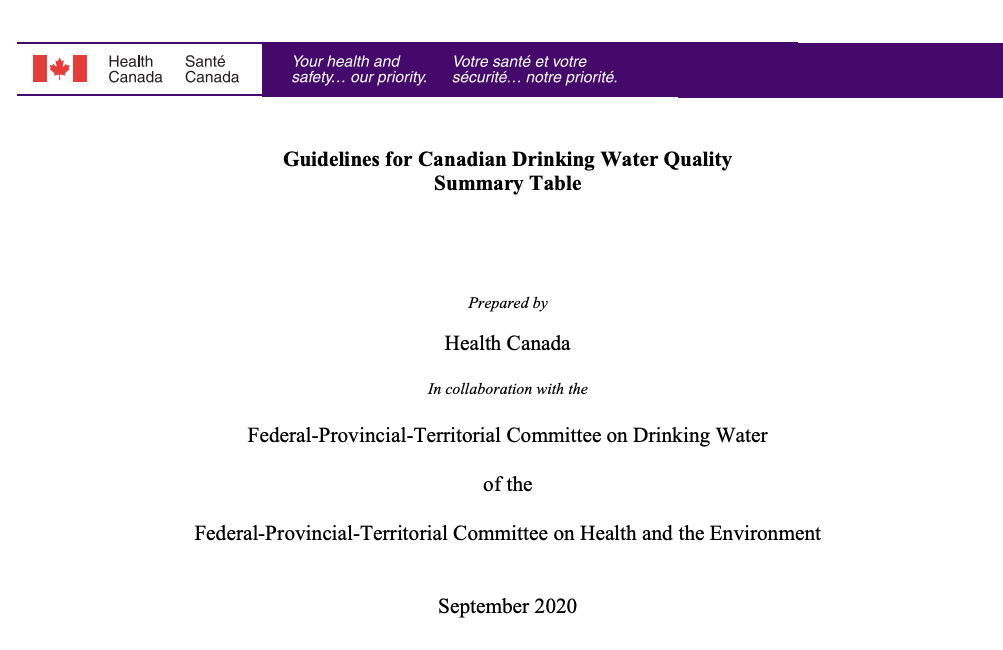
Hi all…Health Canada has been quite busy producing guidelines and guidance for drinking water over the past few years! Following a request for comments in July 2020 they have released Guidance on Monitoring the Biological Stability of Drinking Water in Distribution Systems. The intent of the document “is to provide responsible authorities, such as municipalities and water system operators, with an overview of: 1) causes of microbial water quality deterioration in the distribution system; 2) monitoring tools that can be used to assess biological stability; and 3) distribution system management strategies. Although the primary focus of this document is on the component of the distribution system that carries water to buildings, there is a brief discussion of premise plumbing. It is acknowledged that a water utility’s responsibility does not generally include plumbing systems. The guidance presented here replaces the Guidance on the Use of Heterotrophic Plate Counts in Canadian Drinking Water Supplies (Health Canada, 2012).”
(You will see that each guideline or guidance document has been prepared in collaboration with the Federal-Provincial-Territorial Committee on Drinking Water. The committee has been active for over 20 years and is made up of 14 voting members, one for each jurisdiction in Canada (10 provinces, three territories, and the federal government) as well as some non voting members. More information is available on their website.)
Bill
________________________________________________________
EXECUTIVE SUMMARY
“The drinking water distribution system is the last protective barrier before the consumer’s tap. A well-maintained and operated distribution system is therefore a critical component of providing safe drinking water. In order to maintain water quality in the distribution system, it is essential to understand when changes occur. This understanding is achieved through the use of monitoring aimed at assessing the biological stability of water in the distribution system. Health Canada completed its review of biological stability of drinking water in distribution systems. This guidance document was prepared in collaboration with the Federal-Provincial-Territorial Committee on Drinking Water and describes the significance of biological stability in drinking water distribution systems, monitoring approaches and best practices designed to ensure safe drinking water.
Assessment
Distribution systems represent a complex and dynamic environment, where numerous physical, chemical and biological interactions and reactions capable of significantly impacting water quality can occur. As a consequence, illness, including waterborne outbreaks, has been linked to degradation in distribution system water quality. Despite this, drinking water distribution systems, and the changes in biological stability within them, are generally not characterized or well-understood. The intent of this document is to provide stakeholders, such as provincial and territorial regulatory authorities, decision makers, water system owners and operators and consultants with guidance on the use of monitoring methods to assess the biological stability of water in distribution systems, with the objectives of minimizing public health risks in Canadian water systems.”





